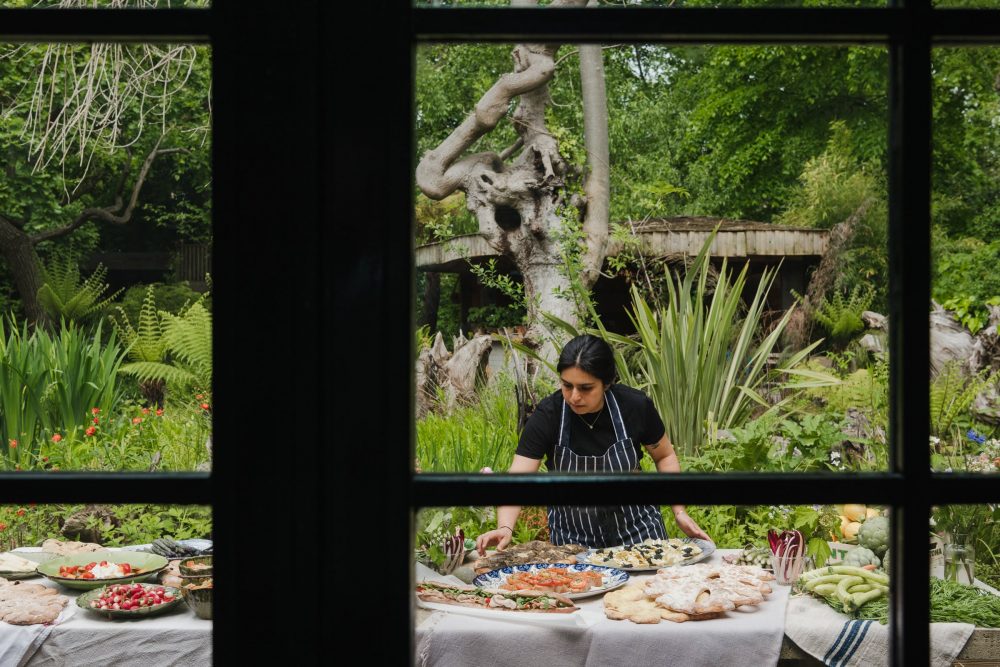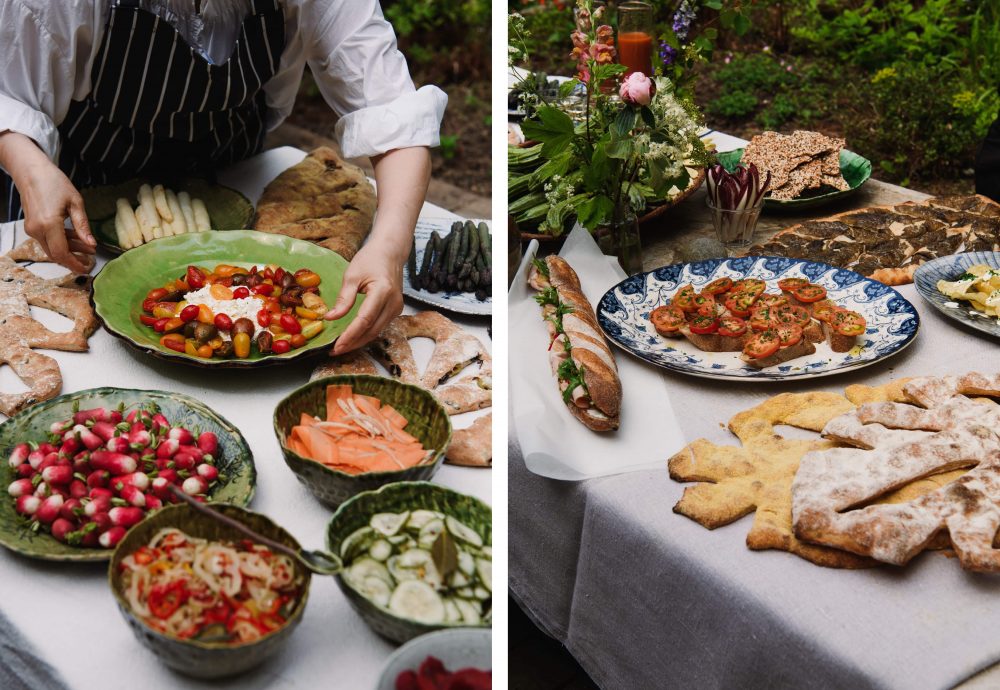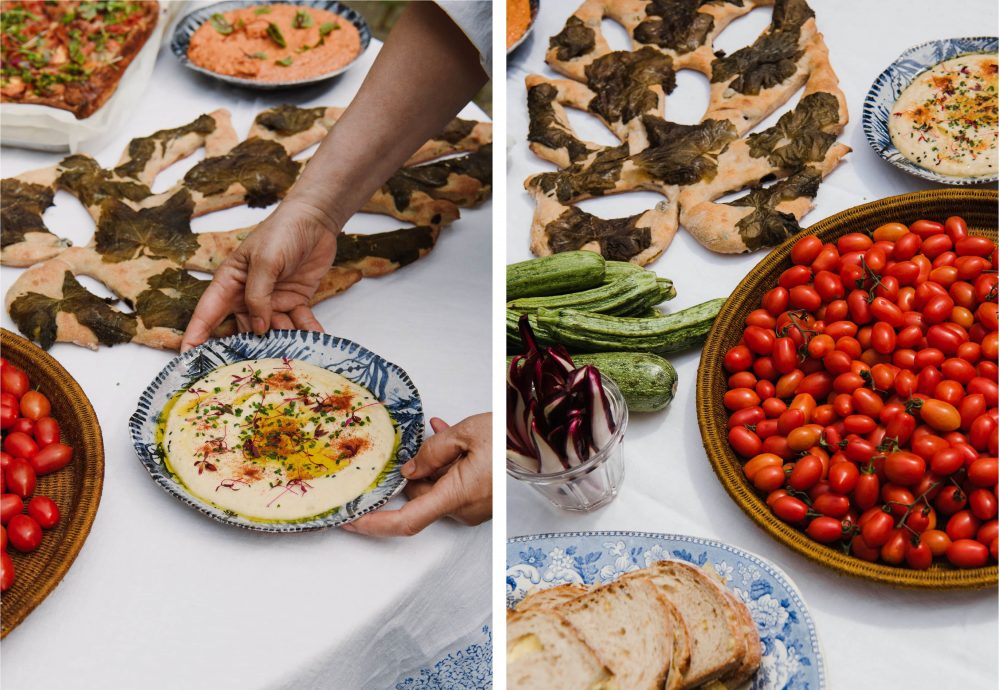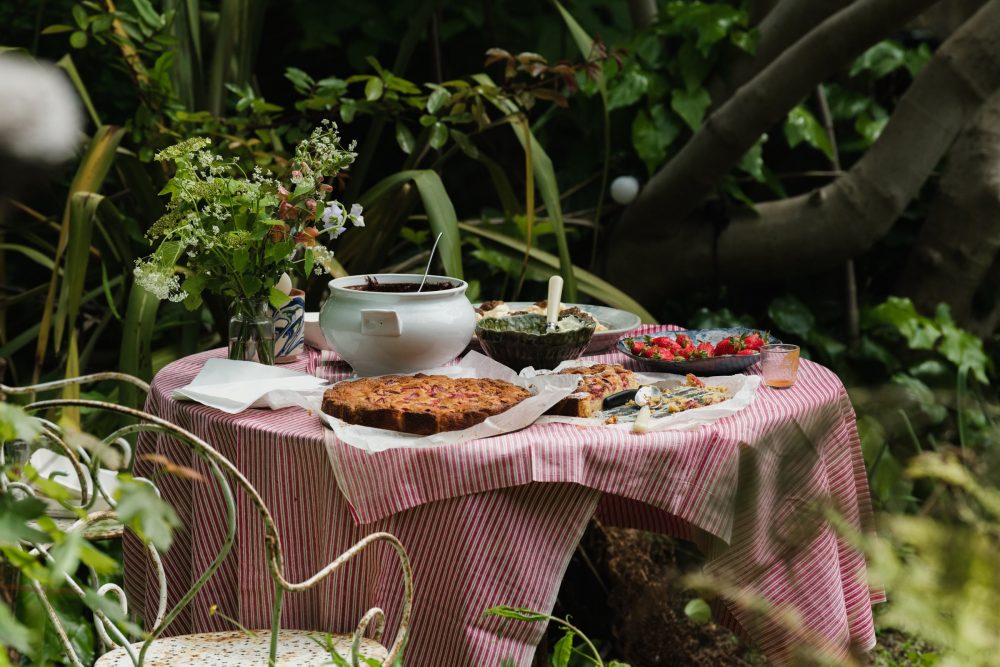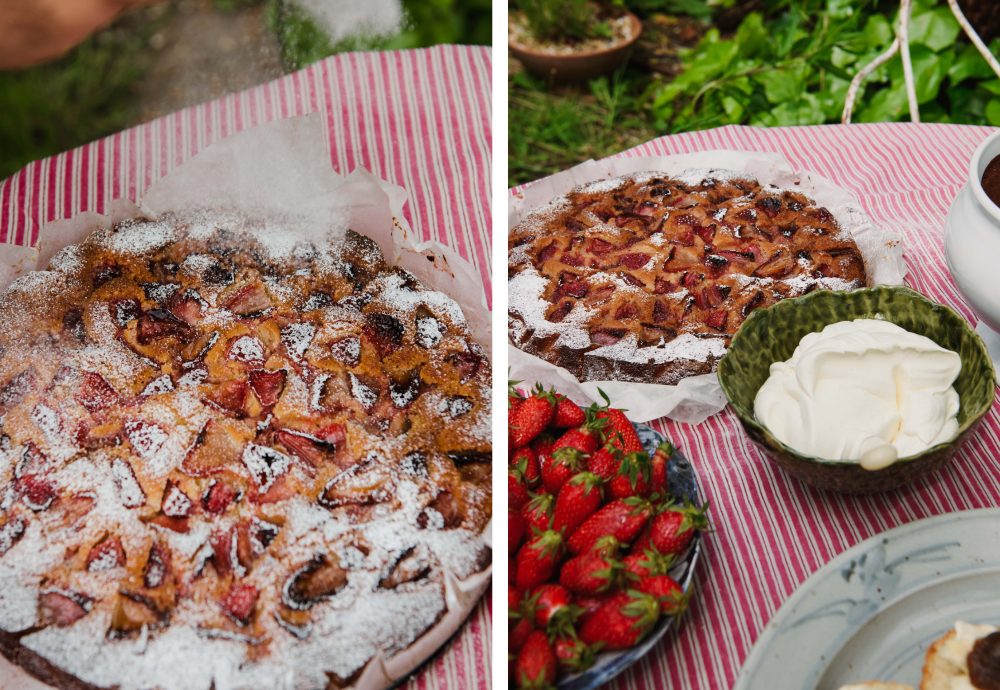Our seasonal collaborators break bread and reflect on the contradictions at the heart of creating fermented food.
“Learn the rules like a pro, so you can break them like an artist,” said Pablo Picasso. Well, with baking it’s more, “Learn the rules like a pro, and then stick to them like a pro”. A master baker is not a rule breaker, but a long-term rule follower – someone who knows through experience and repetition everything that goes into making bread and applies this instinctively, effortlessly. If your grandmother was anything like ours, you’ll know this well. When she baked, nothing was ever weighed, no recipe books were ever called upon and there was never a bread machine in sight. She did everything instinctively by touch and sight: Too dry? this much more water. Too wet? this pinch more of flour. It was intuitive and natural and it always produced the best bread. The reason? She was an unassuming master, someone who had, without even knowing it perhaps, perfected making bread by doing it over and over again.
But although your grandmother never showed it she was, like any expert baker, quietly obsessive. When weighing, mixing, kneading, proving and scoring, the baker has to fastidiously oversee everything that will influence the end result – mistakes are not corrected by the oven, only revealed. Like a potter and their kiln, the oven’s transformative effect is to lay bare everything the baker has put into their loaves, a display of all their knowledge and experience. Baking asks two requirements, then: one that every detail is controlled, and then, with the shutting of the oven door, that control is surrendered entirely.
“Fermenting, like baking, is an act of hope.”
And it turns out that bakers are not alone in having to master these opposing requirements. The making of foods and drinks that involve fermentation (including sourdough bread) is all a balance of control and letting go, obsession and surrendering. Fermentation, for the uninitiated, is the act of chemically changing food via microbial processes to make things flavourful and last longer. The skill lies in creating conditions for the microbes to do their work, which is possible via the regulation of two main factors: temperature and time. Get these right and good bacteria and yeast will produce tastes and textures of sybaritic beauty. The fizz in your champagne? The umami-ness of miso soup? The light sourness of natural yoghurt? All a result of microbes being left at the right temperature for the right amount of time. But this is not always easy and requires some faith as much as it does skill. The real art for the fermenter, then, is setting everything up for success and then… letting go, surrendering to the process. Fermenting, like baking, is an act of hope.
Pictured clockwise from top: Greta Landers-Pollard lays outs seasonal dishes. Two Farmers crisps, crème fraîche and caviar. Baguettes smeared with butter and topped with tomatoes sit next to two fougasse loaves and a mortadella baguette. Lorraine Wood places a platter of tomatoes and dairy-free superstraccia down next to radishes and three bowls of Eaten Alive pickles.
Someone who knows this well is Pat Bingley, co-founder of Eaten Alive, maker of various fermented kimchi, sauerkrauts and hot sauces, who was recently in attendance at a seasonal lunch we hosted to bring together people who had contributed to our summer menu around the idea of losing control. Addressing a small group of our team members and collaborators who had gathered around a table laid with summer’s bounty, Bingley explained that “Fermenting gets interesting in the summer months, because the temperature means everything gets a bit wild and a bit sped up. It’s definitely harder to control in summer”. In front of him was evidence of what happens when the art of letting go is done correctly, though: piquant pickled chillies piled into mortadella sandwiches; long slivers of carrot pickled with raw vinegar and sweetened with green anise; and purple carrots which had been fermented for two months – “A very long time, in which a lot of the natural sweetness is lost because the bacteria feeds on the sugar, but what is left is a long, complex flavour, which is what’s interesting about it,” explains Bingley.
“We know more about the bottom of the deepest sea than we do about the bacteria that develops when fermenting food”
One of the great unknowns when fermenting is what bacteria will develop. “In any given batch, there could be unique sub-species that we will never know about. We know more about the bottom of the deepest sea than we do about the bacteria that develops when fermenting food,” Bingley said. Variation, unpredictable outcomes and complexity are not concepts favoured by the commercial food industry, which likes the opposite, in fact: uniformity, reliability, consistency. “I think World War II really changed our food system,” explained Bingley, “The priority became about ensuring we could feed large populations and troops and so quality was measured not by how something tasted, but by how stable and long-lasting it was, and that’s been hard to shake off”. Because losing control is not an art the agenda-setting mainstream food industry is interested in mastering, the culture can be challenging to smaller artisans who embrace imperfection and variation as markers that their food is real, authentic and alive.
Pictured clockwise from top: Guests enjoying the seasonal spread. A bowl of Eaten Alive chillies. Patrick Bingley speaking about fermentation.
And that’s true not just for makers of fermented pickles. “At GAIL’s we give food inspectors a headache because they ask us how long we bake our bread for and we reply, ‘As long as it takes for the loaves to be ready’” said Tom Molnar, our CEO, as he ran a red endive lead through a bowl of muhammara sauce. “They want us to say a precise time down to the second, but that’s not how we do things.” Instead, we are driven by a desire to make seasonal food from scratch, often using traditional methods, always by hand – a desire that was expressed wholeheartedly in the preparation for the lunch. Our bakers proved harder to control than a lively sourdough starter when they were tasked with baking three wheat-flower-shaped fougasse loaves for the table but instead provided 13, one of which contained blueberries, another beautifully draped in vine leaves. “They couldn’t be stopped” said our creative director, Roy Levy.
“We maybe got carried away”
Vegetables from Natoora – themselves a lesson in letting go to the will of nature – were lightly handled to showcase their flavour: green, purple and white asparagus, quickly blanched; tomatoes laid on slices of baguette with thick slabs of butter, then cut and paired with cheese for the galettes, and datterini varieties pilled onto dairy-free superstraccia and dressed in olive oil. There were bowls of spicy radishes, jugs of gazpacho and piles of hand-cooked crisps from Two Farmers. “We maybe got carried away,” said Levy, looking at the spread, “we lost control a bit ourselves!”
Pictured clockwise from top: A cheese and tomato galette is placed next to a bowl of muhammara sauce, for dipping crudités. The fougasse loaves. A platter of datterini tomatoes next to a vine leaf-wrapped fougasse loaf . Freshly made humus with olive oil, chives and edible flowers.
Nothing was wasted, though. As the afternoon wound down, guests were invited to fill paper bags with produce and leftovers to take home, which included heaped dollops of chocolate mousse, strawberry cake and scones adorned with clotted cream and jam. Bottles of lemonade and citrus soda from east London-based Square Root were handed out by the brand’s co-founder, Robyn Simms – “We make everything ourselves, which turns out is really rare in the soda industry,” she explained of the process of making their lemonade. “Our lemons come from a third-generation farming family in Sicily, and they arrive so fresh we don’t need to use preservatives or wax.”
Pictured above: Away from the main table, under the shade of a tree, a table of deserts includes a tureen of chocolate mousse, polenta & strawberry cake, fresh Gariguette strawberries and crème Chantilly and scones with clotted cream and rhubarb & vanilla jam.
With the last goodbye said, Levy took a moment to reflect on this first seasonal lunch which we will repeat at the start of each coming season to welcome in a new set of collaborators, ingredients and conversations about food: “We couldn’t resist cooking a lot today, but that’s what summer is; it’s a season for letting go of control.”

